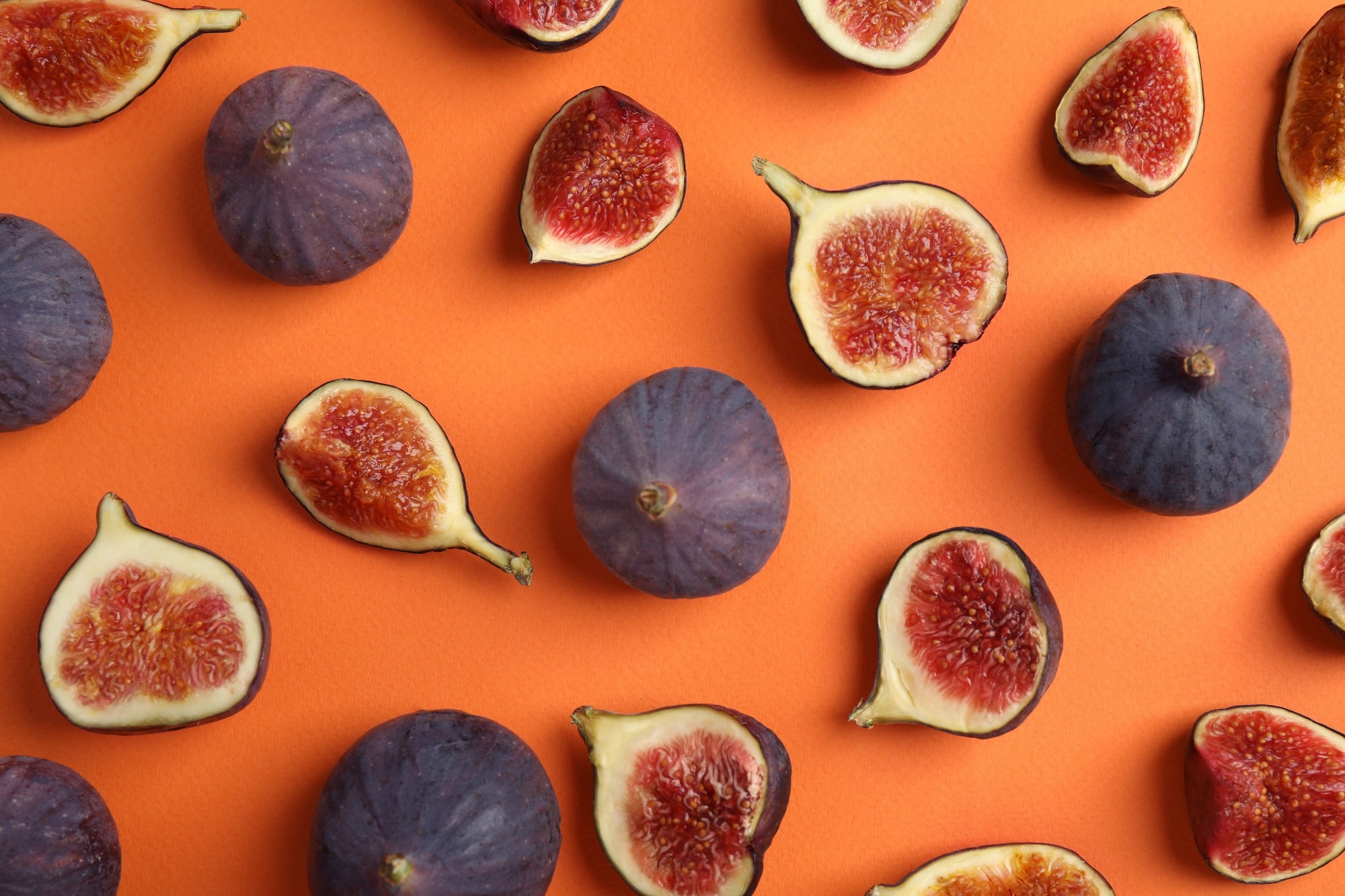In a recent study published in the Nutrients Journal, researchers explored the phytochemical contents and health benefits of consuming figs.
 Study: Phytochemical Composition and Health Benefits of Figs (Fresh and Dried): A Review of Literature from 2000 to 2022. Image Credit: NewAfrica/Shutterstock.com
Study: Phytochemical Composition and Health Benefits of Figs (Fresh and Dried): A Review of Literature from 2000 to 2022. Image Credit: NewAfrica/Shutterstock.com
Background
Figs, scientifically known as Ficus carica, are deciduous tree or shrub that belongs to the Moraceae family. They are native to Southwest Asia and the Middle East. For centuries, people have recognized the value of these fruits for their positive impact on a range of health issues, such as gastrointestinal, inflammatory, respiratory, cardiovascular, and metabolic disorders.
Figs contain various beneficial components such as vitamins, organic acids, minerals, amino acids, carotenoids, dietary fibers, and polyphenolic compounds. Figs are often disregarded for their health benefits in comparison to other fruits.
The health benefits of figs in the human diet can be determined by analyzing their phytochemical composition.
Nutrients found in figs
Figs contain a variety of micro and macronutrients such as carbohydrates, organic acids, vitamins, minerals, and dietary fiber. Figs are rich in fiber and protein, while the fat content in edible wild fig fruits ranges between 1.02 and 2.71 g/100 g DW.
Linolenic is the most abundant fatty acid found in various fig varieties, along with linoleic, oleic, and palmitic acids. Figs are rich in carbohydrates and amino acids, including leucine, valine, lysine, and arginine.
High-performance liquid chromatography (HPLC) has been used in several studies to analyze sugars and organic acids present in different types of figs. Dried figs contain higher levels of sugars and organic acids than fresh figs.
Notably, the Portuguese fig variety contains four free sugars, namely glucose, trehalose, fructose, and sucrose, along with five organic acids, including quinic, oxalic, citric, malic, and succinic acids in both its peel and pulp.
Several organic acids have been analyzed in fig fruits and their parts, including malic, oxalic, citric, ascorbic, shikimic, quinic, and fumaric acids. The benefits of consuming these organic acids include reducing inflammation, regulating the immune system, promoting calcium absorption, and preventing blood clots.
Figs are the most mineral-rich fruit among commonly consumed fruits. They contain essential minerals like potassium, sodium, magnesium, calcium, phosphorus, and trace elements, including iron, zinc, manganese, nickel, copper, and strontium.
Health benefits of figs
Cardiovascular risk benefits
Most studies on the connection between figs and cardiovascular disease risk are based on animal research, and there is a scarcity of data on this topic. In a study conducted for four weeks, participants consumed a three-fourth cup of dried fruit mix containing figs versus a carbohydrate-rich snack.
The study found no significant alterations in body weight and minimal effects on lipid levels in both groups. In the crossover study, initiating fig intake first increased cholesterol levels, indicating a sequence effect.
This study also showed increased low-density lipoprotein (LDL) and fasting glucose levels.
Diabetes
A decoction of fig leaves has been found to effectively control postprandial glycemia in type 1 diabetes mellitus (T1DM) patients, according to bio-efficacy testing in humans. The use of fig leaf decoction was found to be more effective than oral hypoglycemic drugs in reducing two-hour postprandial glycemia in T2DM patients.
Another study compared the effects of fig and metformin on individuals with T2DM. It showed that metformin lowered blood sugar concentrations by 27.6% after two months of treatment, while figs lowered blood sugar concentrations by 13.5%.
Research has shown that abscisic acid (ABA) can enhance glucose homeostasis. Figs contain a moderate amount of ABA. A study conducted on healthy human adults found that two fig fruit extracts (FFEs) had a significant impact on reducing postprandial glycemia.
The reduction was observed at higher doses of ABA administered with the FFEs. Ficusin, derived from F. carica leaves, positively affected blood glucose levels, lipid profile, nephrotic markers, plasma insulin, liver enzymes, liver glycogen, and β-cells in a rat study conducted in vivo.
New and developing areas of figs-related health benefits
The development of Alzheimer’s disease (AD) is believed to be caused by an excess of oxidants, including reactive oxygen species (ROS) and inflammatory substances. Figs are a nutrient-dense fruit that contains fiber, micronutrients such as copper, manganese, iron, magnesium, calcium, potassium, and vitamin K, as well as polyphenol compounds that have anti-inflammatory and antioxidant properties.
A study also found that supplementing mice diet with 4% figs can prevent memory decline and anxiety-related behavior, reduce position discrimination learning ability, and impair spatial and motor coordination.
Consuming figs or flixweed resulted in a significant decrease in irritable bowel syndrome (IBS) symptoms such as defecation frequency, pain, and hard stool compared to the control group. When taken orally, Ficus carica L. aqueous extracts (FCAE) can improve gastrointestinal transit and gastric emptying by reducing their time. It can also alleviate constipation severity caused by colitis.
Conclusion
Regular consumption of figs, alone or in combination with other dried fruits, has been linked to increased intake of certain micronutrients and improved diet quality. Studies on animals and humans suggest that figs and their extracts have health benefits.
